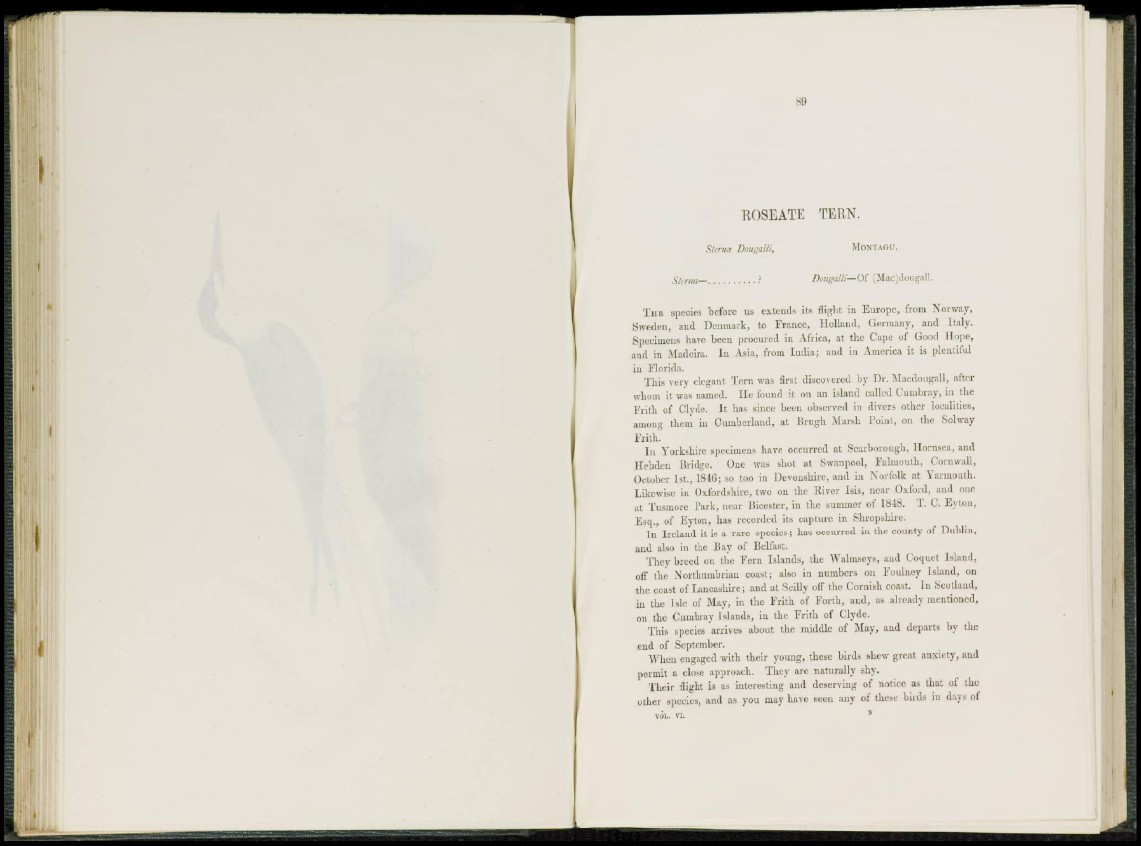
R O S E A T E T E R N.
Sterna Douga///, MONTAGU.
Sterna— ? Donga///—Of (Mac)dougall.
T H E species before us extends its flight in Europe, from Norway,
Sweden, and Denmark, to France, Holland, Germany, and Italy.
Specimens have been procured in Africa, at the Cape of Good Hope,
and in Madeira. In Asia, from India; and in America it is plentiful
in Florida.
This very elegant Tern was first discovered by Dr. Macdougall, after
whom it was named. lie found it on an island called Cumhray, in the
Frith of Clyde. It has since been observed in divers other localities,
among them in Cumberland, at Brugh Marsh Point, on the Solway
Frith.
I n Yorkshire specimens have occurred at Scarborough, Hornsea, and
Hebden Bridge. One was shot at Swan pool, Falmouth, Cornwall,
October 1st., 18IG; so too in Devonshire, and in Norfolk at Yarmouth.
Likewise in Oxfordshire, two on the River Isis, near Oxford, and one
at Tusmorc Park, near Bicester, in the summer of PS IS. T. C. Eyton,
Esq., of Eyton, has recorded its capture in Shropshire.
I n Ireland it is a rare species; has occurred in the county of Dublin,
and also in the Bay of Belfast.
They breed on the Fern Islands, the Wahnseys, and Coquet Island,
off the Northumbrian coast; also in numbers on Foulney Island, on
the coast of Lancashire; and at Scilly off the Cornish coast. In Scotland,
in the Isle of May, in the Frith of Forth, and, as already mentioned,
on the Cumbray Islands, in the Frith of Clyde.
This species arrives about the middle of May, and departs by the
end of September.
When engaged with their young, these birds shew great anxiety, and
permit a close approach. They are naturally shy.
Their flight is as interesting and deserving of notice as that of the
other species, and as you may have seen any of these birds in days of
VuL. VI. N